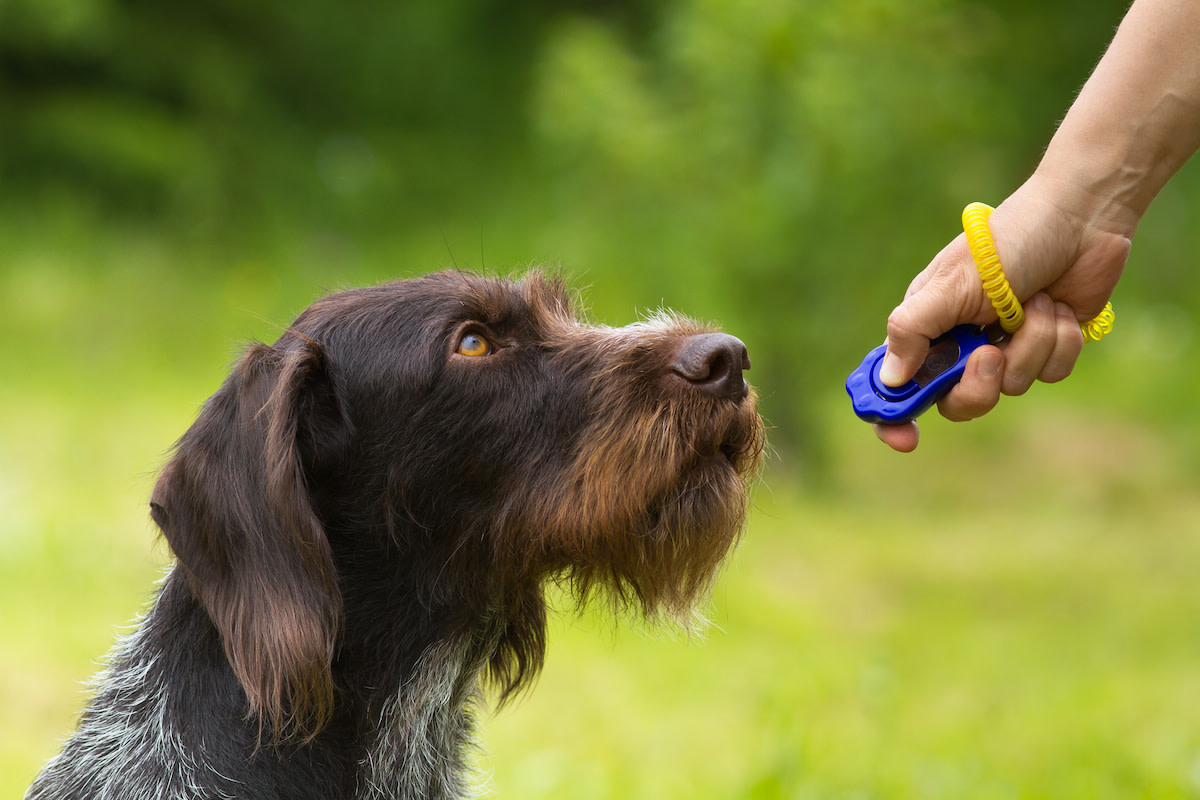How to Clicker Train Your Dog: 7-Step Training Guide
Written by MasterClass
Last updated: Jun 7, 2021 • 4 min read
Whether you want to teach an old dog some new tricks or have a new puppy in need of training, clicker training is a fun way to train your dog to perform various commands.
Learn From the Best
What Is Clicker Training?
Clicker training is a type of dog training that employs a small, handheld clicker device to mark a behavior and uses treats to reinforce the behavior. By triggering a click while simultaneously teaching a technique or offering a treat, you can condition your dog to associate the sound with the command or reward.
Clicker training is based on operant conditioning, an associative learning process that relies on rewards and positive reinforcement rather than punishment. In operant training, dogs are coaxed into the desired behaviors through an incentive, usually a treat, and quickly rewarded when they perform successfully or display good behavior.
In addition to a clicker, you can use other signals to mark behavior (for example, the marker word “yes” or a specific whistle). When selecting a verbal cue, choose a distinct sound or signal that you don’t often use in daily life to avoid confusing your dog. Clickers can be especially useful for training your dog to learn the come and sit commands.
Why Use Clicker Training?
Clicker training is an efficient dog-training method that:
- Takes the guesswork out for your dog. There’s a certain margin of error in standard positive-reinforcement training—when you praise and reward your dog with a treat, they are unsure which behavior you are rewarding. With repetition, your dog will be able to determine the pattern. For instance, if they get a treat every time they sit, they’ll eventually make the connection between the command and the reward. Clicker training helps focus your training so that you can mark the exact moment their rear touches the floor. This instant feedback makes it a lot easier for them to associate your verbal command with the desired behavior.
- Helps with advanced tricks. While dogs can learn the sit, down, and stay commands with conventional training, other commands make regular praise and treating difficult. For example, if you’re teaching your dog to pick something up with their mouth, food rewards become an issue: if you offer them a treat for picking up an object, they’ll drop the object to receive the treat and associate the reward with the wrong action. A clicker helps mark the exact behavior—picking up the object—and streamlines the training process. The clicker is also ideal for long-distance training, like teaching your dog to perform an action when they’re far away from you.
- Pairs well with “shaping”-style training. In traditional methods, dog trainers use commands to tell dogs which behaviors to perform. However, there’s another type of positive-reinforcement training that can be more fun for your dog: shaping. In shaping, you wait until your dog performs a particular behavior on their own, coaxing them along the way. For instance, if you want your dog to lie down on their bed, you can use the clicker to mark and treat them as they take several small steps in the right direction toward the bed. (Click when they look at the bed, go near it, sit on it, and lay down.) Shaping is a slower process than traditional training, but the clicker can make it easier to facilitate.
How to Clicker Train Your Dog
To learn how to use a clicker to practice mark-and-reward training with your dog, check out the following step-by-step guide:
- 1. Choose the right setting. For your dog’s training, choose a comfortable, distraction-free spot where you are in control—avoid teaching commands at the dog park, for example. All training should be done “on leash,” so you can control your dog and hold their attention.
- 2. “Load” the clicker. Before you start clicker training with your dog, you’ll need to teach them to associate the clicker sound with treats. Spend some playtime with your dog, clicking and immediately treating, without looking for any behaviors. Once your dog begins to associate the clicker sound with a treat, you’re ready to start training.
- 3. Start with a command. Encourage your dog to perform a specific new behavior while saying the proper command—for instance, hold a treat above your dog’s head to encourage them to sit, or bring a treat down to the floor to encourage them to lie down.
- 4. Click after the desired behavior. The moment your dog performs the desired behavior, click your dog clicker to mark that behavior.
- 5. Treat. Immediately after clicking, reward your dog with a food treat. This action continues to reinforce the idea that the clicker sound signals an oncoming treat.
- 6. Repeat. Continue clicker training the command over several training sessions.
- 7. Phase-out the clicker. Once your dog can confidently perform the behavior upon hearing the command, you can swap the clicker for verbal praise. However, avoid using the clicker without giving your dog a treat—otherwise, they will stop associating the sound of the click with a treat, and the clicker will become ineffective.
Want to Learn More About Training the Goodest Boy or Girl?
Your dream of having a dog who understands words like “sit,” “stay,” “down,” and—crucially—”no” is just a MasterClass Annual Membership away. The only things you’ll need to train up a well-behaved pup are your laptop, a big bag of treats, and our exclusive instructional videos from superstar animal trainer Brandon McMillan.
